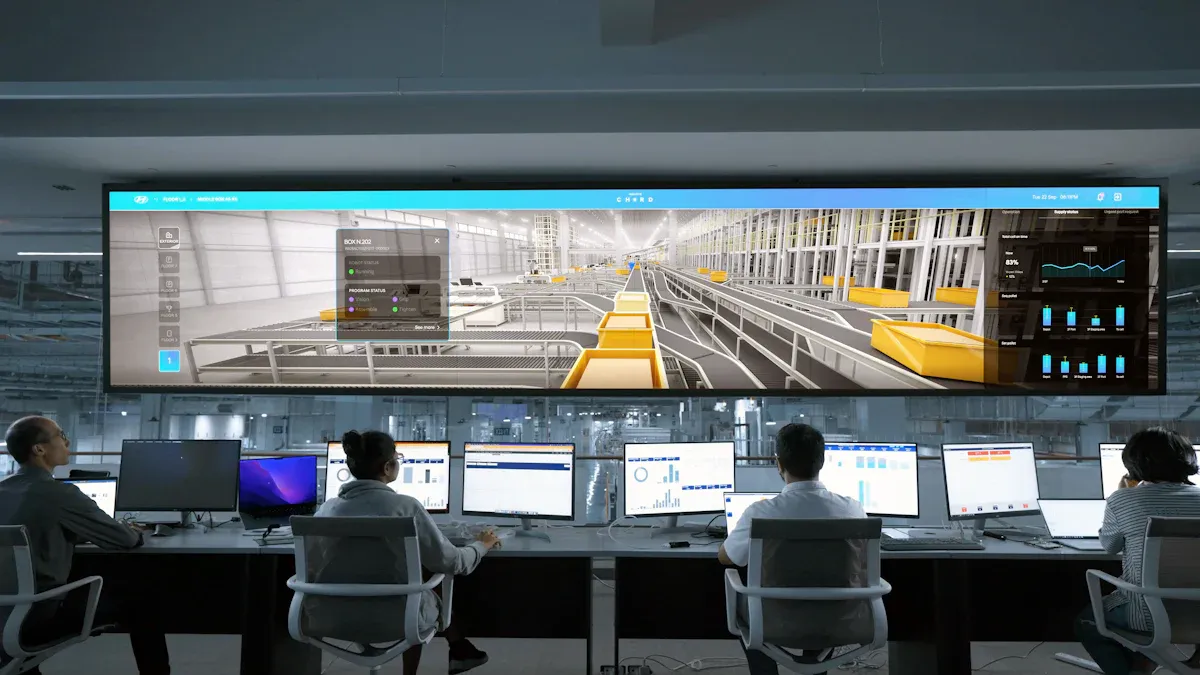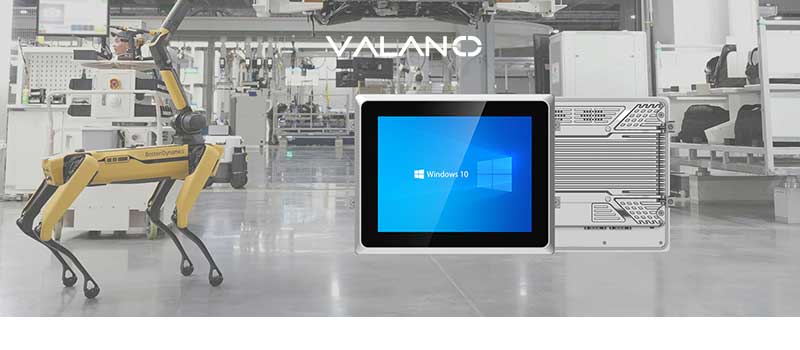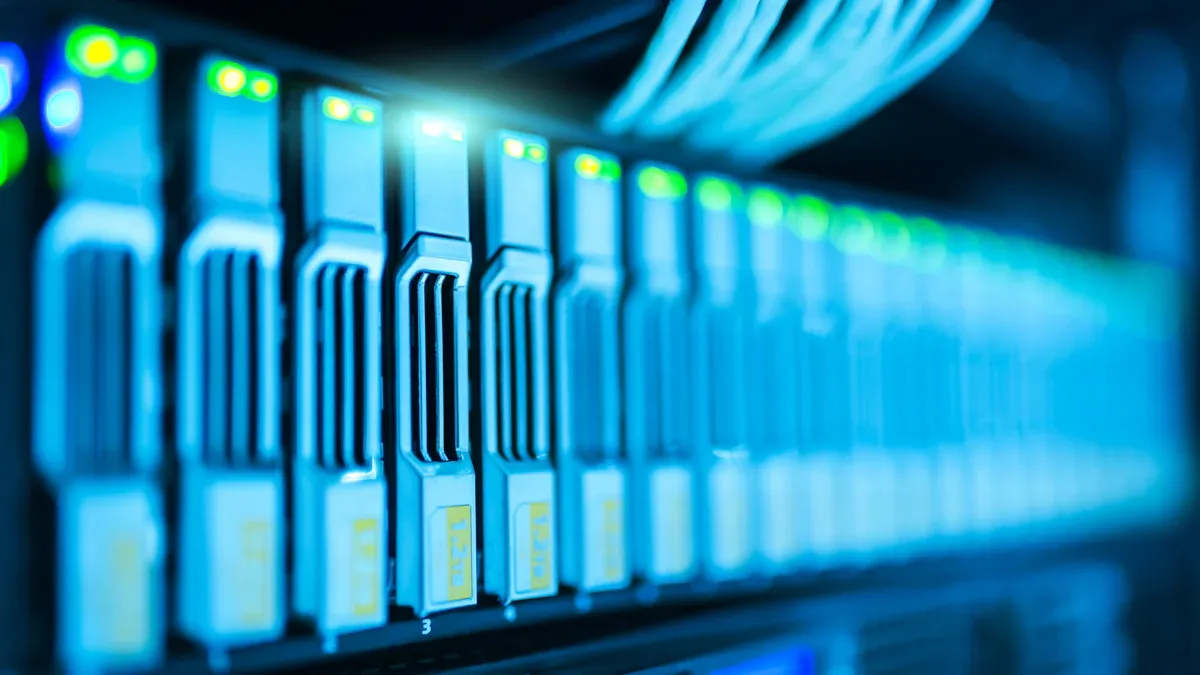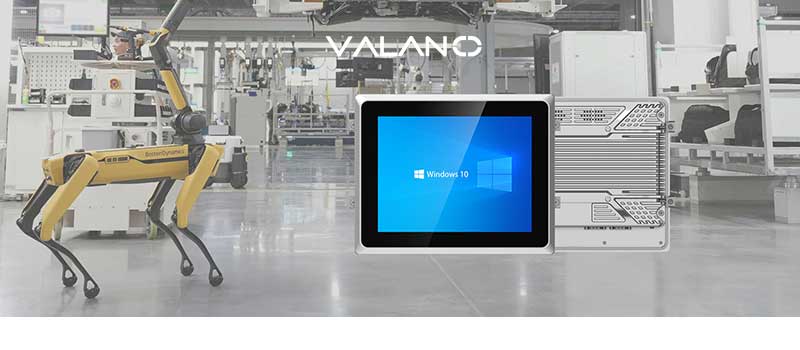
Embedded panel PCs have revolutionized industrial operations by integrating smart computing features into compact, rugged designs. Unlike traditional wall-mounted industrial panel PCs, embedded panel PCs are designed for integration into tight, limited spaces, such as machine panels and kiosks. This allows factories to save valuable floor space while enhancing automation. These embedded systems simplify tasks, save time, and boost productivity. They allow easy connections and quick data handling, which factories need today, making them crucial to running smart factories.
Key Takeaways
Embedded panel PCs help factories work faster and better.
New designs are smaller, fanless, and made from strong materials.
Powerful processors let panel PCs handle data quickly for automation.
Energy-saving panel PCs cut costs and are eco-friendly.
Wireless features and IoT allow instant data use and better upkeep.
Design Trends in Industrial Panel PCs
Smaller and Slimmer Designs: Embedded vs. Wall-Mounted
Today’s embedded panel PCs are designed to be smaller, saving valuable space in tight factory setups. These sleek, fanless designs help keep work areas tidy and improve efficiency by preventing dust and liquids from entering sensitive components. This makes them ideal for spaces where floor space is limited. In contrast, wall-mounted industrial panel PCs typically require more space and are more suited for fixed installations or larger control rooms. Embedded panel PCs are usually more compact and easily integrated into machinery, while wall-mounted models may have larger screens and offer more room for expansion.
Tough Materials for Harsh Conditions
Strong materials are now used in industrial panel PCs. This helps them last in tough environments. For example, IP65-rated devices block water and dust. This makes them great for rough industrial jobs.
These materials help panel PCs work well in hard places like factories.
Stylish and Useful Upgrades
Industrial panel PCs now look good and work better. Sleek designs and easy-to-use features improve user experience. Multi-touch screens and haptic feedback make controls simple. AI and edge computing allow fast data processing and smart maintenance. These updates mix style with function to meet today’s factory needs.
Processing Power in Embedded Panel PCs
Advanced Processors for Industrial Applications
Modern embedded panel PCs are equipped with powerful processors designed to handle demanding tasks. These processors allow for rapid data processing and support automation processes in factories. For example, the 4-core ARM A55 processor is highly efficient in factory settings, while the 11th-gen Intel Celeron processor is built for heavy-duty industrial operations.
Metric | Description |
|---|---|
Strong Processing Power | 4-core ARM A55 processor ensures smooth work in factories. |
High-Performance Tasks | 11th-gen Intel Celeron processor handles demanding industrial operations. |
These advanced processors make work faster and smarter. They help factories stay competitive in the Industry 4.0 era.
Scalability and Customization Options
Panel PCs can grow and change to fit your needs. You can pick screen sizes, power levels, and features for your work. Expansion slots let you add extra tools for special tasks.
Feature | Benefit |
|---|---|
Customization | Add features or hardware to match your industry needs. |
Scalability | Upgrade parts to keep up with new technology. |
This flexibility keeps your panel PC useful for a long time. It adapts as technology improves, saving money over time.
Energy-Efficient Computing Solutions
Energy-saving embedded panel PCs cut costs and help the planet. Using less energy lowers electricity bills. Factories save money and reduce their environmental impact. These fanless embedded panel PCs also ensure that the components stay clean and protected, offering a longer lifespan, especially in industrial settings where dust and heat can be issues. Industrial embedded touchscreen PCs provide an energy-efficient solution for automation in factories.
Energy-saving designs lower costs and support green goals.
Less energy use means smaller bills for transport companies.
IT systems cost less to run with efficient designs.
By choosing energy-smart panel PCs, you save money and help the environment.
Display Technology Advancements in Panel PCs

High-Resolution and 4K Displays
4K displays make embedded panel PCs clearer and sharper, offering four times more pixels than Full HD screens. This gives better visuals and a bigger workspace. In contrast, wall-mounted industrial panel PCs often feature larger displays, making them ideal for areas where users need to view data from a distance, such as in control rooms or public displays. The larger screens in wall-mounted systems can offer enhanced visibility but may lack the compactness and direct integration of embedded panel PCs in machines and workstations.
Benefit | Description |
|---|---|
Better Viewing Experience | 4K screens show sharper, clearer images. |
More Productivity | Bigger workspace helps accuracy and lessens need for extra monitors. |
Professional Use | Important for jobs needing detail, like healthcare and design. |
The need for high-quality screens is growing fast. New tech like OLED and quantum dots makes panel PCs even better for industries.
Multi-Touch and Gesture Controls
Multi-touch and gestures change how you use panel PCs. You can swipe, tap, or pinch to do tasks quickly. These controls make navigation faster and simpler. They also remove the need for buttons, keeping designs clean. This tech improves how panel PCs work and fits the trend of touch-based tools.
Trend/Factor | Description |
|---|---|
Need for Better Displays | More demand for high-quality screens in many fields. |
New Display Tech | OLED and quantum dots improve screen quality. |
Touch-Based Growth | More industries use touch controls for ease. |
These display upgrades make panel PCs must-have tools for modern factories.
Connectivity and IoT Trends in Industrial Automation

Wireless Connectivity for Smart Factories
Wireless connections are changing how factories work. They remove the need for messy cables, making it easy to move machines. This helps factories adjust quickly to new needs. Less downtime means work keeps going smoothly. For example, you can move equipment without stopping production.
Wireless systems in embedded panel PCs enhance safety by providing real-time data from sensors that continuously monitor machine performance. These industrial embedded panel PCs allow factories to predict equipment malfunctions before they occur, preventing breakdowns and improving the safety and efficiency of automated systems.
Improvement Type | Description |
|---|---|
Better Data Analytics | Better data helps improve quality and production. |
Reduced Downtime | Wireless systems cut delays when moving machines. |
Increased Operational Agility | Machines can be moved quickly without stopping work. |
Enhanced Safety | Sensors predict problems, keeping workers and machines safe. |
Cost Reduction | No cables mean lower setup costs for factories. |
IoT Integration for Real-Time Data Processing
The Internet of Things (IoT) is making factories smarter. Panel PCs collect data from sensors and machines. This gives real-time updates to improve work and save time.
For example, IoT systems can predict when machines might break. Fixing them early avoids long delays and high repair costs. Real-time data also helps find and fix product defects fast. A big company used IoT to manage tools better, improving their work and data use.
Application Area | Description |
|---|---|
Predictive Maintenance | Sensors warn about problems early, saving time and money. |
Production Optimization | Watching production closely helps fix problems and improve speed. |
Quality Control | Real-time checks find defects quickly, ensuring good products. |
Inventory Management | Live updates on stock levels prevent running out of supplies. |
Edge Computing for Decentralized Operations
Edge computing is helping factories work faster. It processes data right where it’s made, cutting delays. This is important for robots or quick quality checks.
Edge computing also makes data safer by keeping it local. It allows factories to grow and change easily. For example, edge-powered computers handle tasks on their own, keeping work smooth even in busy places.
Performance Indicator | Description |
|---|---|
Real-time decision-making | Decisions are made instantly using local data. |
Reduced latency | Data is processed faster, improving efficiency. |
Enhanced security | Local data storage keeps information safer. |
Scalability | Factories can grow and add more automation easily. |
Flexibility | Systems adapt quickly to new factory needs. |
Security and Remote Management in Panel PCs
Safe Operating Systems and Firmware
Keeping panel PCs safe starts with updated systems. Old systems miss updates, making them easy targets for hackers. For example, many healthcare devices use outdated systems, risking private data. Regular updates and checks keep your devices secure.
Software problems cause many security issues in factories and healthcare. A secure system lowers these risks and protects important tasks. By focusing on safety, you guard your data and keep work running smoothly.
Cloud-Based Monitoring Systems
Cloud monitoring helps manage panel PCs from anywhere. These systems protect data with encryption and controlled access. Two-factor login adds extra safety against hackers.
Cloud SCADA systems work well in factories. They grow with your needs and adjust to changes easily. Regular checks find weak spots early, keeping your system strong and safe.
Remote Tools for Easy Maintenance
Remote tools make fixing panel PCs simple. You can check performance, update software, and fix problems without being there. This saves time and cuts mistakes by half.
Using remote tools for predictive fixes stops sudden breakdowns. They study data to plan repairs and replacements. This saves money and makes machines last longer. Remote management keeps factory work smooth and efficient.
Embedded panel PCs have changed how industries use computers by adding smart features. These updates, like predictive maintenance and IoT, make work faster and more accurate. Predictive maintenance helps companies fix problems early, boosting investments in 67% of firms. It also cuts downtime by up to 22%. The table below shows how these changes help:
Innovation | What It Does | Measurable Results |
|---|---|---|
Predictive Maintenance | Checks machines for issues before they break. | |
Less Downtime | Uses sensors to quickly adjust production. | Downtime dropped by 18-22%. |
Lower Maintenance Costs | AI tools reduce surprise repair expenses. | Costs fell by 30%. |
Better Production | Sensors help make precise changes in factories. | Production improved by 12%. |
Fewer Material Errors | Robots and cameras work together to avoid mistakes. | Errors dropped by 40% at one factory. |
Stronger in Tough Conditions | Built to last longer in harsh places. | Replacements needed 3-5 years less often. |
Safer for Medicine | Meets FDA rules, cutting paperwork mistakes. | Errors dropped by 75% at Pfizer. |
Accurate Inventory Scanning | Advanced screens improve warehouse tracking. | Accuracy rose by 34% during busy times. |

In the future, industrial PCs will keep improving with AI, better connections, and eco-friendly designs. These updates will make embedded panel PCs even more important for factories.
FAQ
1. Why are embedded panel PCs good for tough workplaces?
These PCs are built with strong materials and no fans. They block dust, water, and handle extreme heat or cold. This makes them work well in factories and hard conditions.
2. Can you change an embedded panel PC for special jobs?
Yes, you can pick different screen sizes and processing power. You can also add extra tools using expansion slots. This makes the PC fit your specific work needs.
3. How do panel PCs save energy?
They are designed to use less power, cutting electricity costs. These energy-saving systems also help factories be more eco-friendly by reducing their impact on the planet.
4. Are embedded panel PCs safe for factory use?
Yes, they have secure systems, regular updates, and data protection. These features keep your information safe and ensure smooth operation in connected workplaces.
5. How does IoT make factories better?
IoT collects and analyzes data in real-time. It helps watch machines, plan repairs early, and improve production. This reduces delays and makes work more efficient.
💡 Tip: Keep your panel PC updated to stay secure and run smoothly.







